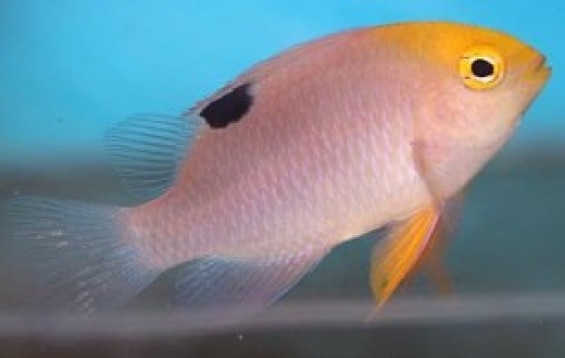- Name:
Talbots Damselfish
(View AKA's) - Family: Pomacentridae
- Species: Damsel
- Scientific Name: Chrysiptera talboti


More Details
General info about Talbots Damselfish
The Talbot's Damselfish has an attractive canary yellow head and a bright blue body. Damselfishes provide an important link both as reef forage fishes and also excellent beginner marine aquarium specimens. Their extensive use is well-warranted considering their diversity, beauty, and tolerance of chemical and physical conditions, gregariousness when crowded and general compatibility with fishes and invertebrates. Damselfish are often used to break in or cycle a new aquarium. It is important to remember that even though these fish are hardy and can handle the adverse conditions of a new aquarium, they may become quite aggressive among themselves, and toward other tankmates. Most of these fish stay in small shoals in the wild when young, breaking away from the group as they grow, and eventually become solitary as adults. When dealing with several Damsels in one aquarium, plenty of rockwork and hiding places are necessary in order to keep quarrels to a minimum.
Relevent Articles
Original Detail
| Name | Species | Family | Scientific Name | More Detail | Added by |
|---|---|---|---|---|---|
| Talbots Damselfish | Damsel | Pomacentridae | Chrysiptera talboti | The Talbot's Damselfish has an attractive canary yellow head and a bright blue body. Damselfishes provide an important link both as reef forage fishes and also excellent beginner marine aquarium specimens. Their extensive use is well-warranted considering their diversity, beauty, and tolerance of chemical and physical conditions, gregariousness when crowded and general compatibility with fishes and invertebrates. Damselfish are often used to break in or cycle a new aquarium. It is important to remember that even though these fish are hardy and can handle the adverse conditions of a new aquarium, they may become quite aggressive among themselves, and toward other tankmates. Most of these fish stay in small shoals in the wild when young, breaking away from the group as they grow, and eventually become solitary as adults. When dealing with several Damsels in one aquarium, plenty of rockwork and hiding places are necessary in order to keep quarrels to a minimum. | PalaciosAn |
Changed by users
| Submitted Date | Submitted By | Status | Action |
|---|



